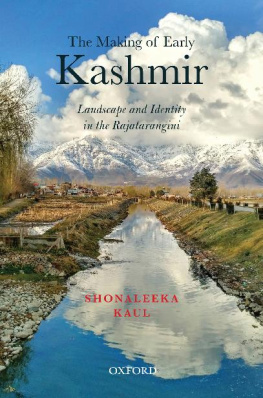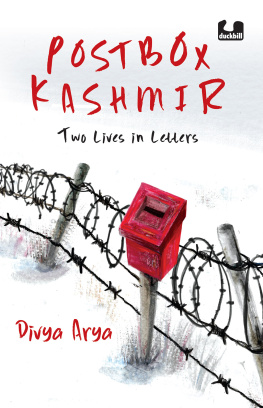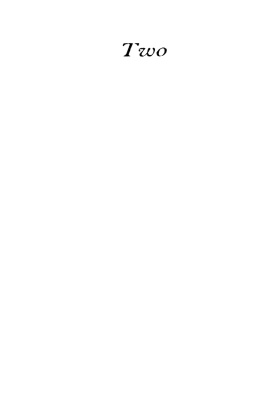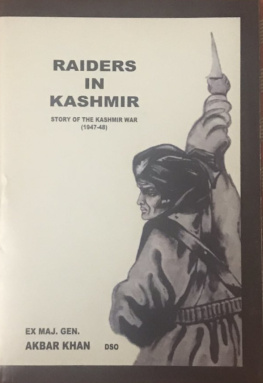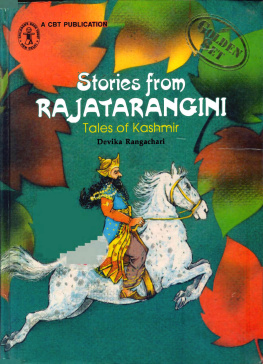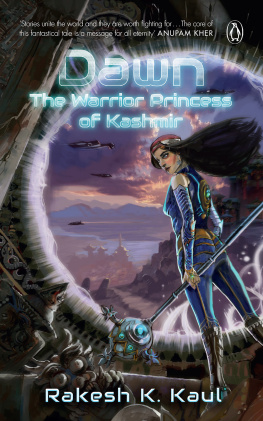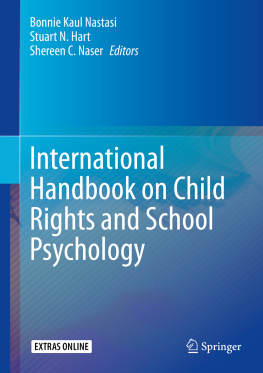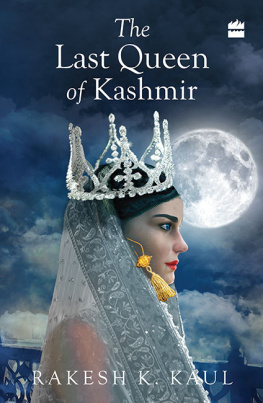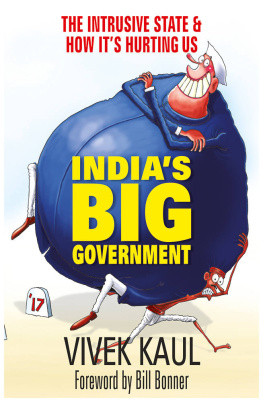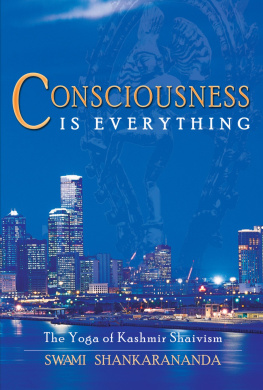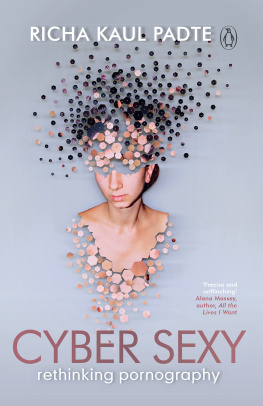The Making of Early Kashmir
Despite its long-acknowledged singularity, the Rjataragi has found singularly little sustained analysis. In fact, Shonaleeka Kauls is the first book devoted to the great twelfth-century work on Kashmir. Carefully argued and beautifully written, Kauls study takes seriously the works claim to be kvya , literary representation that distils reality through the imagination, and shows the particular kind of history it produces, one that constructs a space through time as well as plotting time in space. An empirically rich and theoretically sophisticated work.
Sheldon Pollock, Arvind Raghunathan Professor of Sanskrit and South Asian Studies, Columbia University, New York, USA
Professor Kaul provides an engaging and stimulating reading of Kalhanas important text. She argues convincingly that far from being isolated from the rest of the sub-continent, the Kashmir of the Rajatarangani was a lively participant in a wider cultural, economic, and political world.
Phyllis Granoff, Lex Hixon Professor of Religious Studies, Yale University, New Haven, USA
Modern adoption of the text [Kalhaas Rjataragi ] for writing Kashmirs early history is essentially a reproduction of the text, except for the methodological pressure of attempting to separate the grain from the chaff, the factual from the mythical. Shonaleeka has dared to depart from this approach by treating the Rjataragi , as it should be treated, not as a quarry for randomly selected historical information, but as a kvya , in which lie embedded varieties of cultural ingredients of the valley. Shonaleekas multidisciplined approach to the text has resulted in a fascinating exploration of the making of the special identity of early Kashmir
B. D. Chattopadhyaya, former Professor, Centre for Historical Studies, Jawaharlal Nehru University, New Delhi
The Making of Early Kashmir
Landscape and Identity in the Rajatarangini
shonaleeka kaul
Oxford University Press is a department of the University of Oxford.
It furthers the Universitys objective of excellence in research, scholarship,
and education by publishing worldwide. Oxford is a registered trademark of
Oxford University Press in the UK and in certain other countries.
Published in India by
Oxford University Press
2/11 Ground Floor, Ansari Road, Daryaganj, New Delhi 110 002, India
Shonaleeka Kaul 2018
The moral rights of the author have been asserted.
First Edition published in 2018
All rights reserved. No part of this publication may be reproduced, stored in
a retrieval system, or transmitted, in any form or by any means, without the
prior permission in writing of Oxford University Press, or as expressly permitted
by law, by licence, or under terms agreed with the appropriate reprographics
rights organization. Enquiries concerning reproduction outside the scope of the
above should be sent to the Rights Department, Oxford University Press, at the
address above.
You must not circulate this work in any other form
and you must impose this same condition on any acquirer.
ISBN-13 (print edition): 978-0-19-948292-4
ISBN-10 (print edition): 0-19-948292-6
ISBN-13 (eBook): 978-0-19-909330-4
ISBN-10 (eBook): 0-19-909330-X
Typeset in ScalaPro 10/16
by The Graphics Solution, New Delhi 110 092
Printed in India by Replika Press Pvt. Ltd
rkrpaamastu
Dedicated to the memory of my grandfather
Pandit Prem Nath Kaul
Proud and pious Kashmiri and lover of history
contents
MAPS
IMAGES
A work of history should perhaps begin by telling its own history. I first picked up Kalhaas Rjataragi in 2005 to help get through the long months that separated the submission of my doctoral thesis and the conduct of the viva voce for it. My PhD had been on Sanskrit kvya (highly aesthetic poetry and prose) and it was to read another kvya that I turned to the Rjataragi . In retrospect, this intuitive approach was propitious. For, swimming against the tide of its enormous reputation as a work of objectivist history rather than poetry, reading the Rjataragi then, and again more carefully in 201213, I went on to argue that the Rjataragi was indeed a kvya first, and thereby perhaps history.
A second, instant observation on my first reading of the text has also stood the test of 12 years of time to remain the centrepiece of my thinking and analysis on the Rjataragi that is presented in this book. This is the conviction that ethics is the fulcrum of Kalhaas literary and historical vision. This was, however, not something that most of 200 years of modern scholarship on the Rjataragi had believedthey who had looked upon the moral, didactic, and rhetorical tendencies of the poem as an eminently disregardable indulgence typical of convention-bound, brahmanical Sanskrit poets. Though the preaching of the ancients may have little interest for intellectuals of today, to deny the centrality for those poets of this preoccupation with a critical idealism and call to action is, to my mind, to miss the moving spirit and raison of an entire thought-world.
From my resumption of the laborious study of the sprawling Rjataragi from scratch in 2012 to the completion of this book in 2017, a significantly wider dimension gradually attached itself to the project. This drew on the realization that Kalhaas efforts may have been directed at generating not only a history or temporality but also, perhaps even more significantly, a place for history/time. This place was Kashmir, and the writing of its history by Kalhaa, I argue, was tied up with creating a homeland. Implicated in this process were not only the sacred geography of the land and a model of prescriptive politics but also an understanding of regional selfhood that aspired to transcend the narrow cultural limits of vernacularism.
This book then became an investigation of larger, discursive questions that possess, I would like to believe, an enduring primacy across the humanities and social sciences as also a striking resonance for contemporary Kashmir and the world. These questions are: What is history and in what modes may we receive it? How does a land become a homeland? And how are cultural identities formed? That the three questions are in fact intertwined and inform one another is perhaps at the core of the answers to them that this book proposes. Howsoever obscured, the ancient past cannot be erased or wished away. It shapes a land and a people in intrinsic ways, it shapes their collective self. An identity divorced from history may descend into delusion.
In the course of delivering many lectures based on my readings in Kashmiri history, in Delhi, in other parts of India, and in academies abroad, I discovered a disturbing reality. Indians knew so little about Kashmir; no doubt the result of its complete and shocking absence from school and university curricula. The world knew even less, and perhaps only the tales of violence and strife that have been doing the rounds in certain diplomatic and academic circles for the last 30 years. However, and undoubtedly the saddest of all, many young Kashmiris in the Valley today, reared on a schizophrenic narrative, seemed to know or care the least about the rich origins and legacy of their land. Though hardly written with that object, it is hoped that The Making of Early Kashmir will go some way in forcing our collective attention back to the ancient history of a region that once spearheaded virtually all intellectual and cultural movements in the Indian subcontinent with trademark erudition and brilliance.



